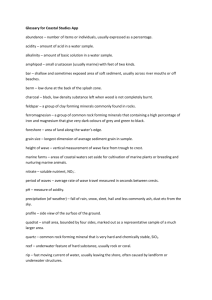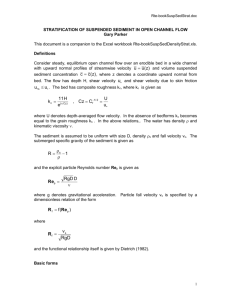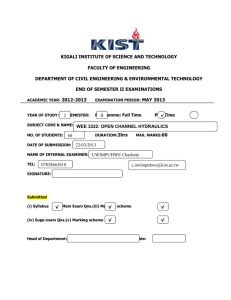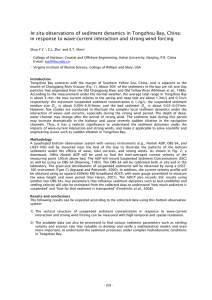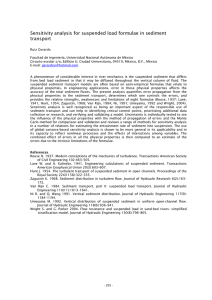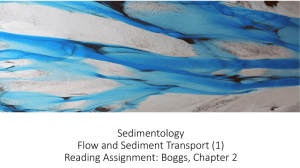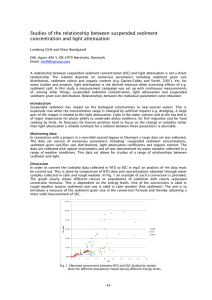Types of sediment load
advertisement
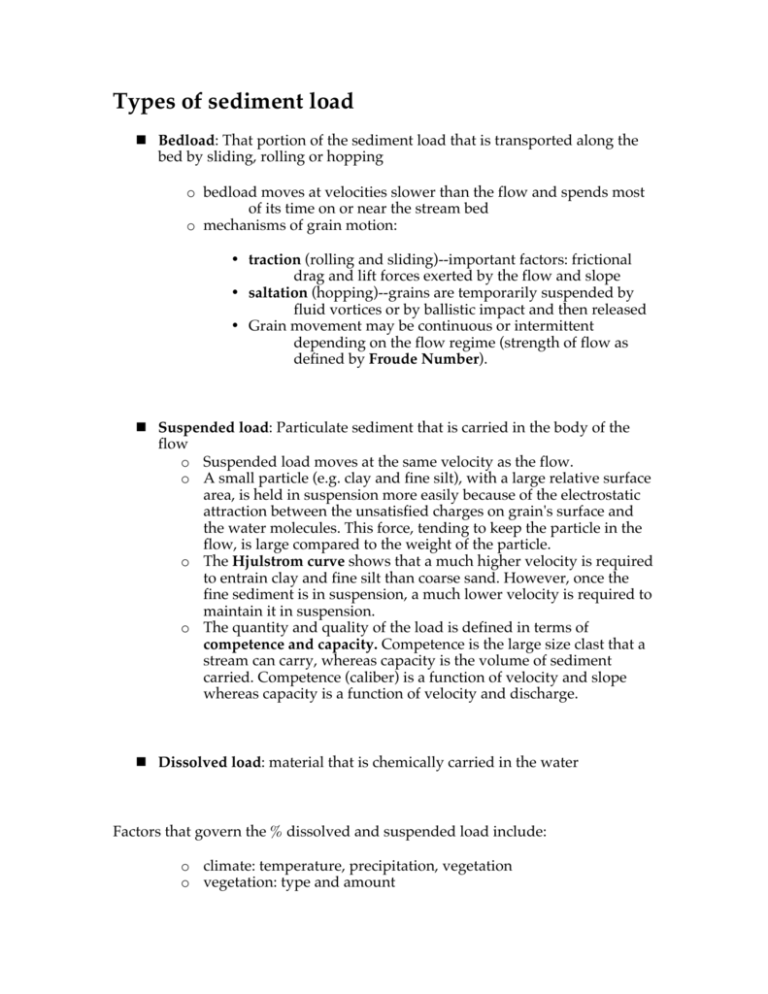
Types of sediment load n Bedload: That portion of the sediment load that is transported along the bed by sliding, rolling or hopping o bedload moves at velocities slower than the flow and spends most of its time on or near the stream bed o mechanisms of grain motion: • traction (rolling and sliding)--important factors: frictional drag and lift forces exerted by the flow and slope • saltation (hopping)--grains are temporarily suspended by fluid vortices or by ballistic impact and then released • Grain movement may be continuous or intermittent depending on the flow regime (strength of flow as defined by Froude Number). n Suspended load: Particulate sediment that is carried in the body of the flow o Suspended load moves at the same velocity as the flow. o A small particle (e.g. clay and fine silt), with a large relative surface area, is held in suspension more easily because of the electrostatic attraction between the unsatisfied charges on grain's surface and the water molecules. This force, tending to keep the particle in the flow, is large compared to the weight of the particle. o The Hjulstrom curve shows that a much higher velocity is required to entrain clay and fine silt than coarse sand. However, once the fine sediment is in suspension, a much lower velocity is required to maintain it in suspension. o The quantity and quality of the load is defined in terms of competence and capacity. Competence is the large size clast that a stream can carry, whereas capacity is the volume of sediment carried. Competence (caliber) is a function of velocity and slope whereas capacity is a function of velocity and discharge. n Dissolved load: material that is chemically carried in the water Factors that govern the % dissolved and suspended load include: o climate: temperature, precipitation, vegetation o vegetation: type and amount o o o o activity by man: mining, construction, clear cutting, etc. rock solubility: e.g. hard water in carbonate terranes erodibility of materials in the drainage basin relief and slope (affects PE of flow)

